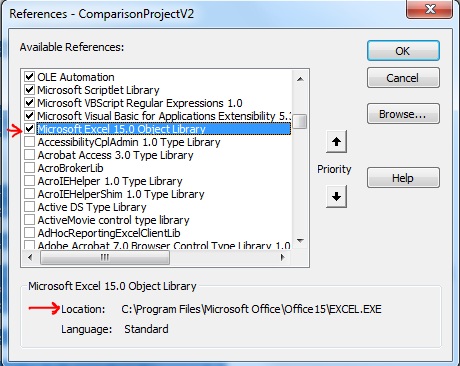

// Selection.TypeText Text:="Creating a Title".// vba code generated from recorded macro to "remind me" how to do it.if (theQueryDialog.ShowDialog() = DialogResult.OK).TitleQuery theQueryDialog = new TitleQuery().// Use the custom dialog to get the title of the document from the user.private void button2_Click( object sender, System.EventArgs e).
#Missing microsoft word 15.0 object library code
Once you know this trick, the rest of the interoperability used with Word is pretty straightforward.īelow is the code for creating a document from scratch: If you want to skip over a parameter in the call to Open, use the and assign it to an object. Don't ask me why it was done this way, but it seems like when Microsoft goes through a call with optional parameters, they had no choice but to make everything a variant so on the C# side of the parameter list looks like a bunch of references to objects. Notice the parameters passed to the Document.Open method are all references. The code above opens a document based on the file chosen in the OpenFileDialog.

The application in this particular article is divided into two methods based on the button that is pressed in the form.
#Missing microsoft word 15.0 object library how to
Now anything you type, open, delete, or format, will get recorded in VBA, so you have a clue how to write your Word Interoperability code. To start the macro recorder in Word, go to Tools->Macro->Record New Macro inside Microsoft Word. (Of course this is VBA code, but.close enough). So in order to jump straight over the learning curve, I simple turn the Macro Recorder on in Word and let Word write the code for me. Personally, I never want to figure the Microsoft Word code out myself, because the Word hierarchy and properties, although rich in features, has a bit of a learning curve. Now you can call the interesting methods and properties that Microsoft Word provides to you to manipulate documents in Word. private Word.ApplicationClass WordApp = new Word.ApplicationClass().


 0 kommentar(er)
0 kommentar(er)
